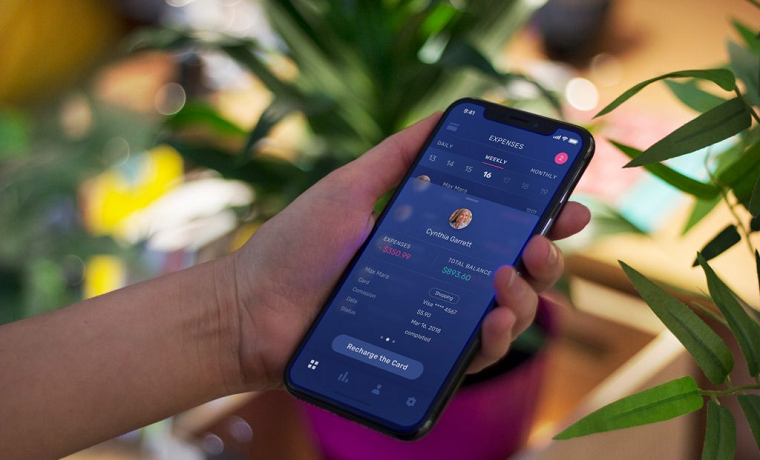So you’re building a mobile application. You want your application to be ripe with the best features, compliment your product, and boast of a great design that keeps your users coming back for more. If only there were a blueprint to building an app that delivers a seamless user experience…
Fortunately, there is.
Jakob Nielsen’s 10 general principles for interaction design, or simply ‘heuristics’, are almost as old as the study of user experience itself. The broad set of principles provide a UX designer ten boxes to check that reveal important insights which all come into play while designing and enhancing a product.

-
Visibility of system status
The first usability heuristic is visibility of system status. This means that your application must always keep the user informed about what’s going on through feedback—this may be visual, audio-visual or haptic.
-
Match between system and the real world
The second usability heuristic talks about the match between system and the real world. The application must speak a language that everyday users can relate to and intuitively figure the meaning of.
For instance, a bell icon corresponds to a chiming bell, which allows users to intuit what the function of the icon might be—to notify.
-
User control and freedom
As humans we often tend to err on their way while performing a task. As such, an application must be forgiving.
The third usability heuristic is about forgiveness—or as renowned UX author Everett McKay calls it: affordance. A user must be provided with an escape route if they perform an action like tapping the wrong button by mistake—and an ‘undo’ button grants them the ability to revert and choose the right icon.
-
Consistency and standards
The best design lives and dies on features and details—and such details must be consistent in the avenue of UX design. The fourth usability heuristic ‘consistency and standards’ states that, because users arrived with preconceived expectations, these must be fulfilled through consistency in design.
For instance, a gear icon normally represents ‘settings’ in a minimalistic UI—however, if a designer were to replace it with something abstract—such as a wrench, they might end up with some baffled users.
-
Error prevention
By eliminating peculiar conditions, the margin of error can be minimized dramatically.
Nielsen also emphasizes on minimizing the margin of major, high-cost errors first, and then move on to the littler frustrations.
-
Recognition rather than recall
Ever wonder why classroom tests were seldom fun? That’s because they relied on recollection and recall rather than discovery. Nielson advises against putting the user’s memory to test every time they open your application, by relying on recognition rather than recall.
People are more likely to correctly figure out the right solution from a group of options instead of having to recall them. It’s much easier to recognize your file in a window of ‘recently opened’ folders than to have to recall exactly what directory you took.
-
Flexibility and efficiency of use
Do you ever find yourself frantically searching for the ‘undo’ button on Microsoft Office applications? Likely not, because ‘Ctrl+Z’ just makes it a lot easier to undo what you did that shifted every image in the word document two pages away from where it’s supposed to be.
The seventh heuristic is all about efficiency and not having to look for the function left and right when you need it. Accelerators such as pinching to zoom out, using key-combinations to perform a task such as taking a screenshot save valuable time for users in a fast-paced world.
-
Aesthetic and minimalist design
Technology went from a Blackberry with a full QWERTY keyboard to an iPhone with a display that has no buttons at all—and if that doesn’t testify to the appeal of aesthetic and minimalist design, nothing will. Nielsen argues that this holds true in the case of UI design as well. Any element that contains information that isn’t needed competes with the visibility of the one that contains information essential to performing a task.
For instance, a dropdown menu often contains just one option that the user wishes to select, and a lot more that are irrelevant. Thankfully, there are a number of alternatives to dropdowns—such as sliders, buttons, switches and steppers—that make for a better user experience.
-
Help users recognize, diagnose, and recover from errors
As users can err, so can the system. That’s why Nielsen’s ninth heuristic underscores the unrivalled significance of clear, concise error messages. The errors must be described to the user in the language they understand—that tells them precisely what’s wrong. For instance, ‘Unknown exception Dx0001991’ is a bad way of informing the user that their internet isn’t working because the Wi-Fi is toggled off.
-
Help and Documentation
Nielsen’s final heuristic—put simply, says when the users need help, it must be easy to find. Help must be available where it’s necessary and useful in performing a complex task, and in small, incremental, yet concise instructions. If possible, it should be listed where the user will require it the most.
Abhinav Raj is a political correspondent for Immigration Advice Services based in Manchester, UK. Immigration Advice Services provides pro-bono legal counsel to displaced persons, refugees, migrants and asylum seekers all over Europe

